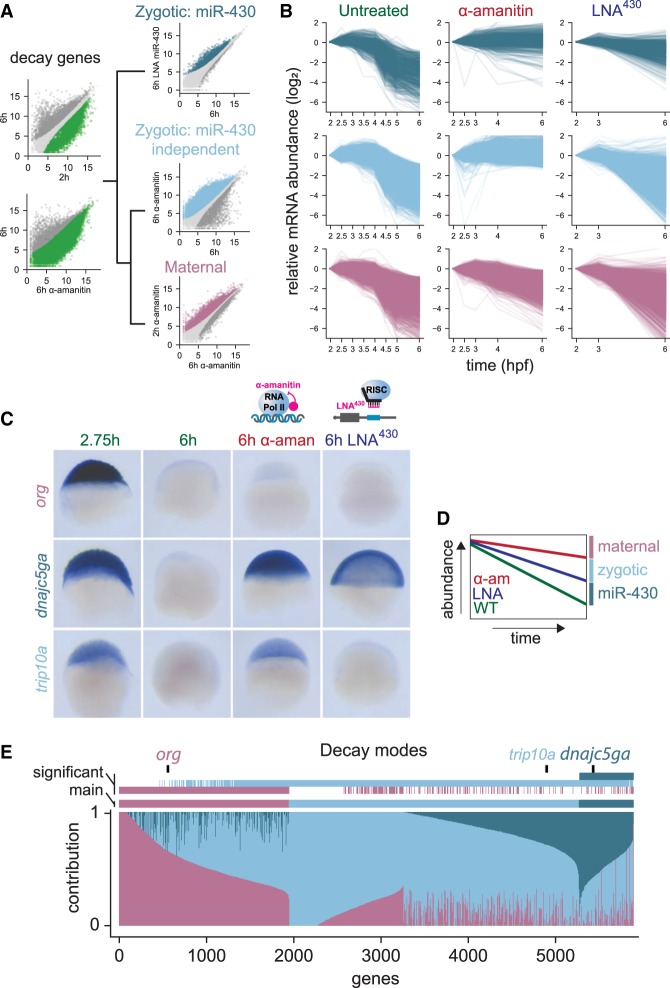Figure 1.
Distinct pathways regulate maternal mRNA decay. (A) Hierarchical protocol followed to separate genes into their predominant mode of decay. Among decaying genes (green) determined as stable early (2 hpf) or higher in absence of zygotic transcription (α-amanitin treatment), miR-430 decaying genes were first characterized using LNA430 treatment (dark blue). Remaining genes, as indicated by the black tree, were split into maternal (purple) and zygotic (light blue) decaying genes based on their dependence on zygotic transcription. Transcripts with nonsignificant expression changes are colored in light gray (see DESeq2 analysis in Methods). (B) Biplots representing mRNA expression levels over developmental time separated by decay pathways. Time-course is shown in WT, α-amanitin, and LNA430 conditions. Each line represents expression level of individual mRNA. (C) In situ hybridization illustrating three genes from the maternal, zygotic, and miR-430–dependent decay modes (n = 20/20). (D,E) Relative contribution of the three modes to RNA decay. Each gene total decay was assessed using fold-change between untreated early and late stages calculated in A. LNA430 and α-amanitin conditions were used to attribute the contribution of the miR-430 and zygotic modes, respectively. Remaining decay was attributed to the maternal mode. This normalization was taking into account that α-amanitin treatment is also blocking miR-430 transcription. For example, if a transcript's decay profile was not affected by blocking miR-430 or zygotic transcription, then that transcript's degradation was wholly attributed to maternal decay mode. In contrast, decay that was prevented by blocking miR-430 or zygotic transcription was attributed to miR-430 or zygotic decay pathways, respectively. As multiple comparisons, used in A to determine each gene mode of decay, can be significant, the main (lowest P) and significant (all significant P) modes of decay are shown (E).

